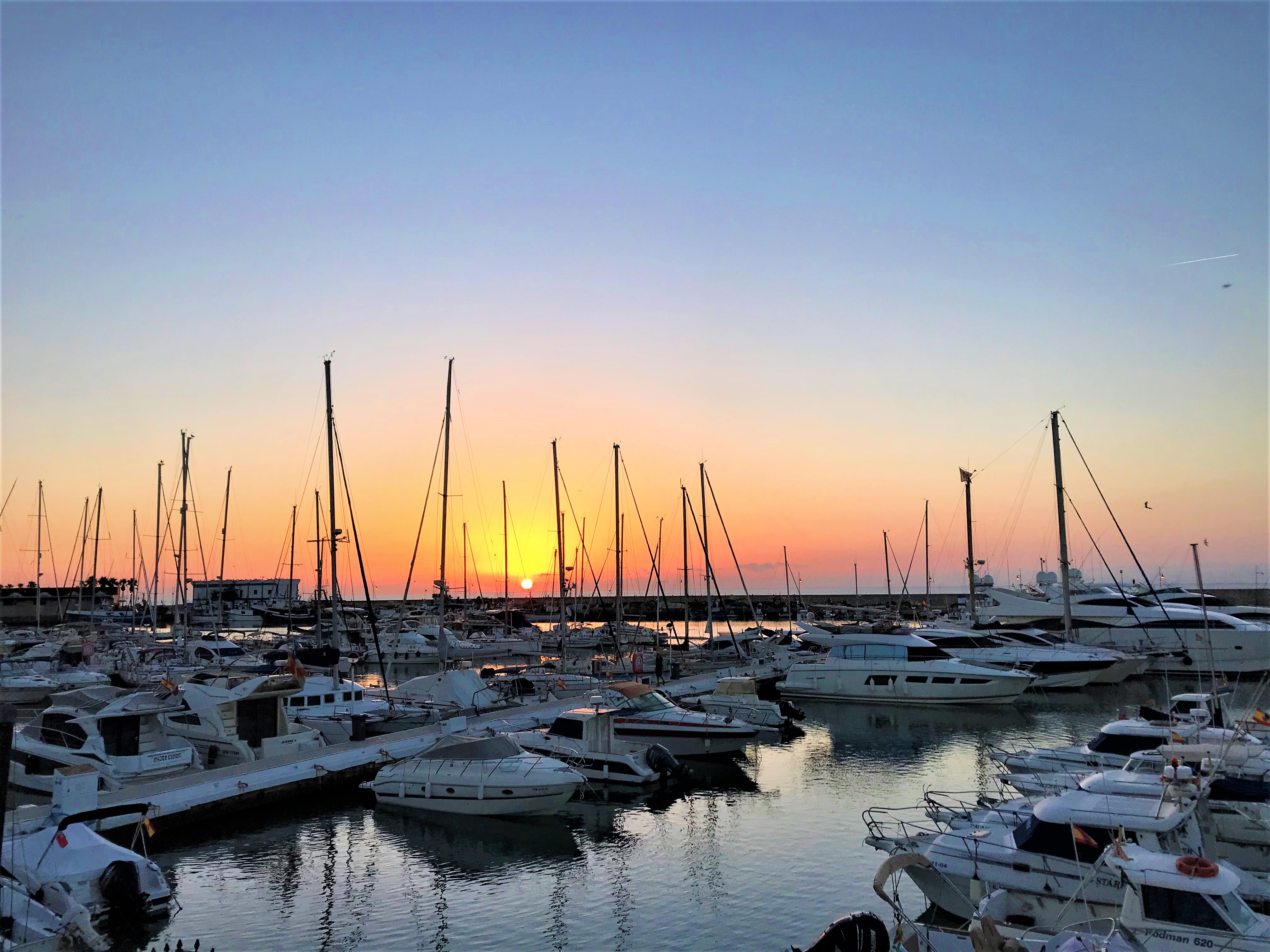
The weekend of the 5 th, 6 th and 7th of October 2018 took place the Xth Edition of the “Ruta de los Fruteros” (the Route of the Fruit Merchants) between Estepona and Ceuta.
What is la Ruta de Los Fruteros?
"La Ruta de los Fruteros" (the route of the fruit merchants) is a nautical event that was brought back to life by members of the Real Club Náutico de Estepona (The Royal Nautical Club of Estepona) with aim to recreate the nautical journeys of those intrepid merchants from Estepona that during the XVIIIth, XIXth and beginning of the XXth century, used to sail to sell local products (mainly fruits and vegetables) to the city of Ceuta located on the tip of the African coast, just across the Strait of Gibraltar.
During the XVIIIth, XIXth and beginning of the XXth centuries tradesmen from Estepona used to enter the strait of Gibraltar on very fragile boats, to create a new point of commerce for the town of Estepona.
Tradesmen from Estepona used to export mainly medlars, lupin, lemon, oranges, figs and olive oil amongst other products from the local farms. Whistle in Ceuta, they would purchase all types of salted fish to sell once they reached Estepona again.
In those days Estepona did not have a port, so the sailing boats would leave from La Rada Beach in the center of town. These boats were built in local shipyards, used to measure between 10 and 12 meters (32 to 39 feet) and have Latin sails. There was a period in history when more that 100 sailing boats would trade between Estepona and Ceuta.
The journey in those days, as it is today, was very difficult due to the strong currents of the strait of Gibraltar and the two predominating winds, Levante (East wind blows from the Alborán Sea to the Strait of Gibraltar) and Poniente (West wind which blows from the Atlantic Ocean to the Strait of Gibraltar).
For these tradesmen and sailors, the journey on sailing boats wasn’t easy; they couldn’t just draw a straight line and sail to Ceuta. Due to the weather conditions, they would have to sail from Estepona, pass the Gibraltar and often having to reach as far as Tarifa in order to be able to make the crossing of the Strait and be able to sail back Ceuta, without missing the town due to the currents and winds.
Think year the Xth Ruta de Los Fruteros took place the first weekend of October. The Director and members of Sur Estates (Real Estate Agency in Estepona) were invited by the RCNE (The Royal Nautical Club of Estepona) to join the regatta.
The event started Friday evening with a cocktail presentation in the The Royal Nautical Club of Estepona. Here captains of the boats discussed they journey and presented the planning of the whole weekend.
The chosen regatta method was the traditional Travesía en Conserva (canned sailing) emulating the traditional method of transportation. Sailing in Conserva, like they used to originally travel, meant that all the boats were sailing together, one next to the other, like sardines placed in a can for conservation (conserva). This type of sailing was the method used for many centuries for two main reasons, to provide assistance between the vessels in case of problems while sailing and secondly to avoid any possible piracy attack.
On Saturday morning, about 70 participants met at the Royal Nautical Club of Estepona for breakfast and final briefing. All the participants met with their vessels in front La Rada beach and after a siren signal, a total of 14 boats, both sailing and engine vessels started their journey towards Ceuta.
The winds from Levante made it quite a pleasant journey, although crossing the strait is never easy. The sailing boats took between 5 and 7 hours to cover the 35 nautical miles.
In the afternoon the Board of Tourism of the city of Ceuta invited all participants to a tour of the beautiful city. A dinner was held at the Restaurant El Cielo. Here the President and Vice President of the RCN CAS de Ceuta (Royal Nautic Club of Ceuta), Mr. Julio Sillero and Mr. Ignacio Tendero offered to Mr. Manuel Pavón (new President of RCNE) a Ceitil (a coin from the city of Ceuta with Portuguese origins) as a sign of hospitality between both sailing clubs.
On Sunday, the journey back from Ceuta to Estepona was carried with very strong winds and high waves coming from Poniente wind. While crossing the strait the waves were reaching at times more than two meters (6,5 feet) in height and challenging all boats.
The tenth anniversary of La Ruta de Los Fruteros was a truly unforgettable experience, taught us a lot about local history, traditions, fraternity and all the beauty involved in the world of sailing. From here, Mr. Max Cignetti, would like to thank Mr. Antonio Simón Sánchez, not just his yacht professor and a true reference in the nautical world here in Spain, but also for his invitation, for sharing his vast knowledge and for the wonderful time spent this journey.


